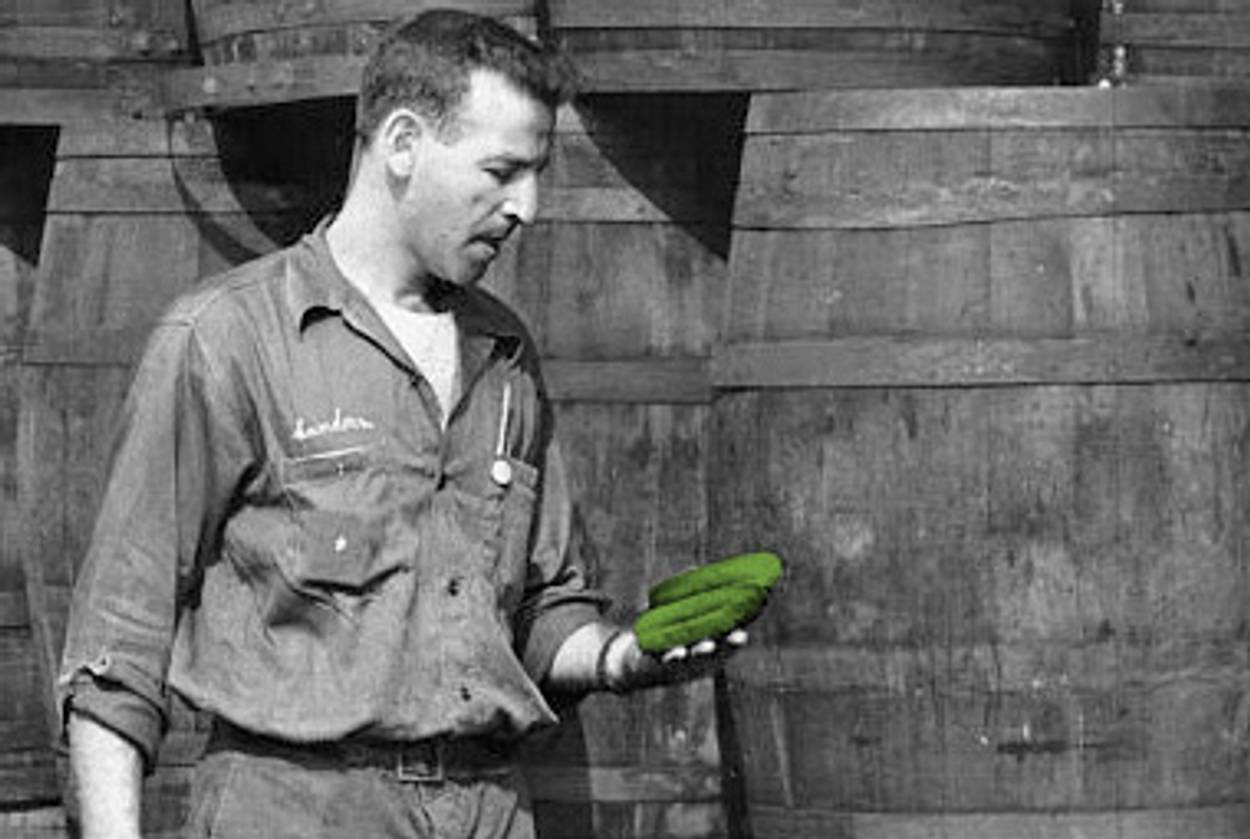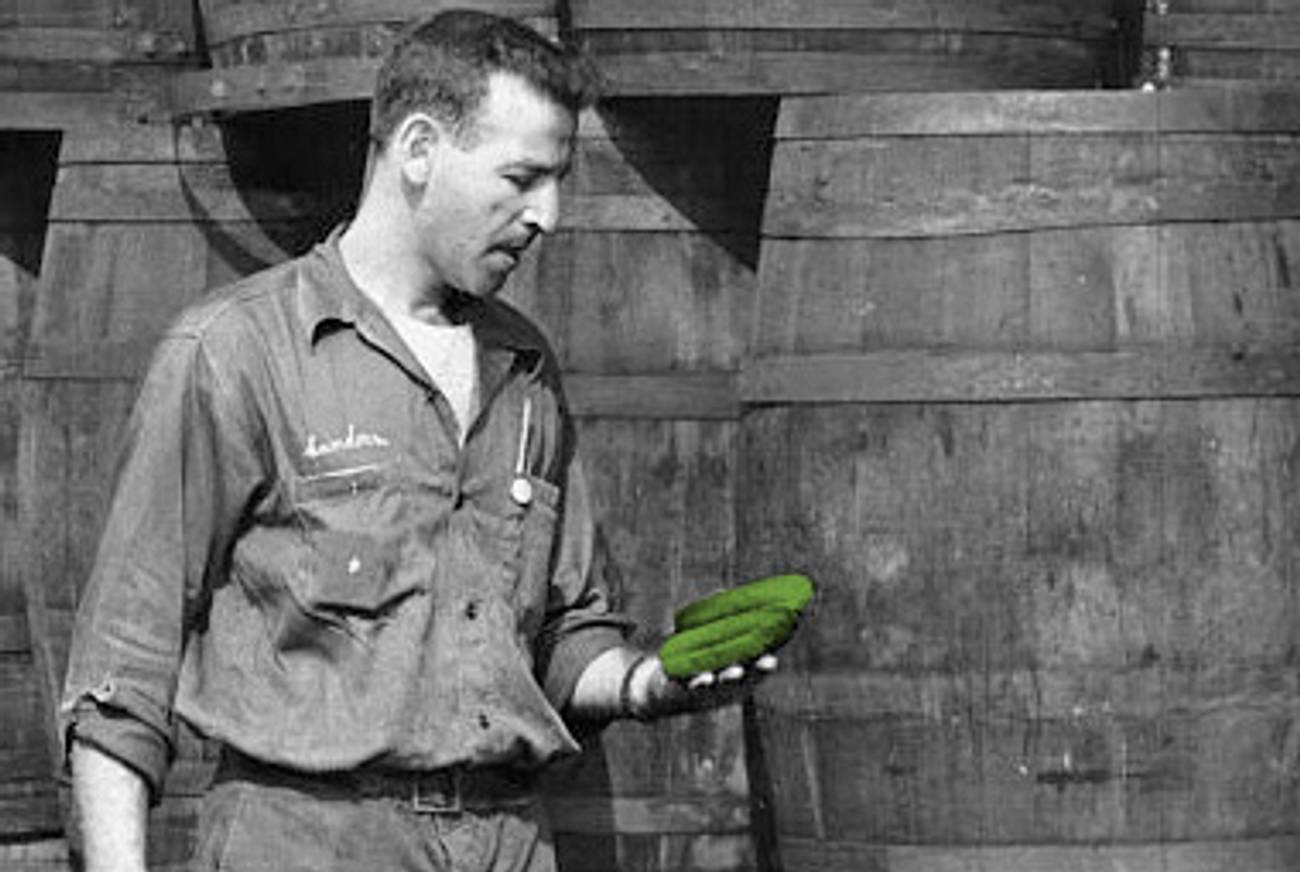Hungry for Assimilation
The pickle, reviled by American food purists, was a staple of the Jewish immigrant diet




It’s always tough being an immigrant. For New Yorkers a century ago, nothing was more noticeable—or repugnant—than the cooking styles different immigrant groups brought to the proverbial melting pot. Spices and seasonings used by newcomers went so far as to cause alarm for politicians and public health officials. Jane Ziegelman, who wrote 97 Orchard, a book chronicling 19th century immigrant groups in New York through their food proclivities, explores the challenges faced by immigrants looking to preserve elements of their heritage while trying to assimilate.
“In other words,” she writes, “to be a good American, you had to eat like one.”
One big problem? The pickle, beloved snack of the Jewish immigrant community. “Pungent beyond all civilized standards, toxic to both the stomach and the psyche, the pickle was seen as morally suspect,” Ziegelman writes. More problematic than its existence, however, was its rampant popularity among all sectors of the Jewish population:
“Consumption of pickles was highest in Jewish neighborhoods like the Lower East Side, where Eastern European peddlers sold them from pushcarts. Their merchandise included whole pickled cabbages, string beans, green tomatoes, peppers, mushrooms, eggplant, apples, watermelon and, of course, cucumbers. All of these goods were produced within the tenements, just a few hundred yards from the carts that dispensed them.”
Luckily for modern-day pickle fans, not even bilingual cookbooks or cooking classes held in settlement houses could eradicate the power of the pickle.
Stephanie Butnick is chief strategy officer of Tablet Magazine, co-founder of Tablet Studios, and a host of the Unorthodox podcast.